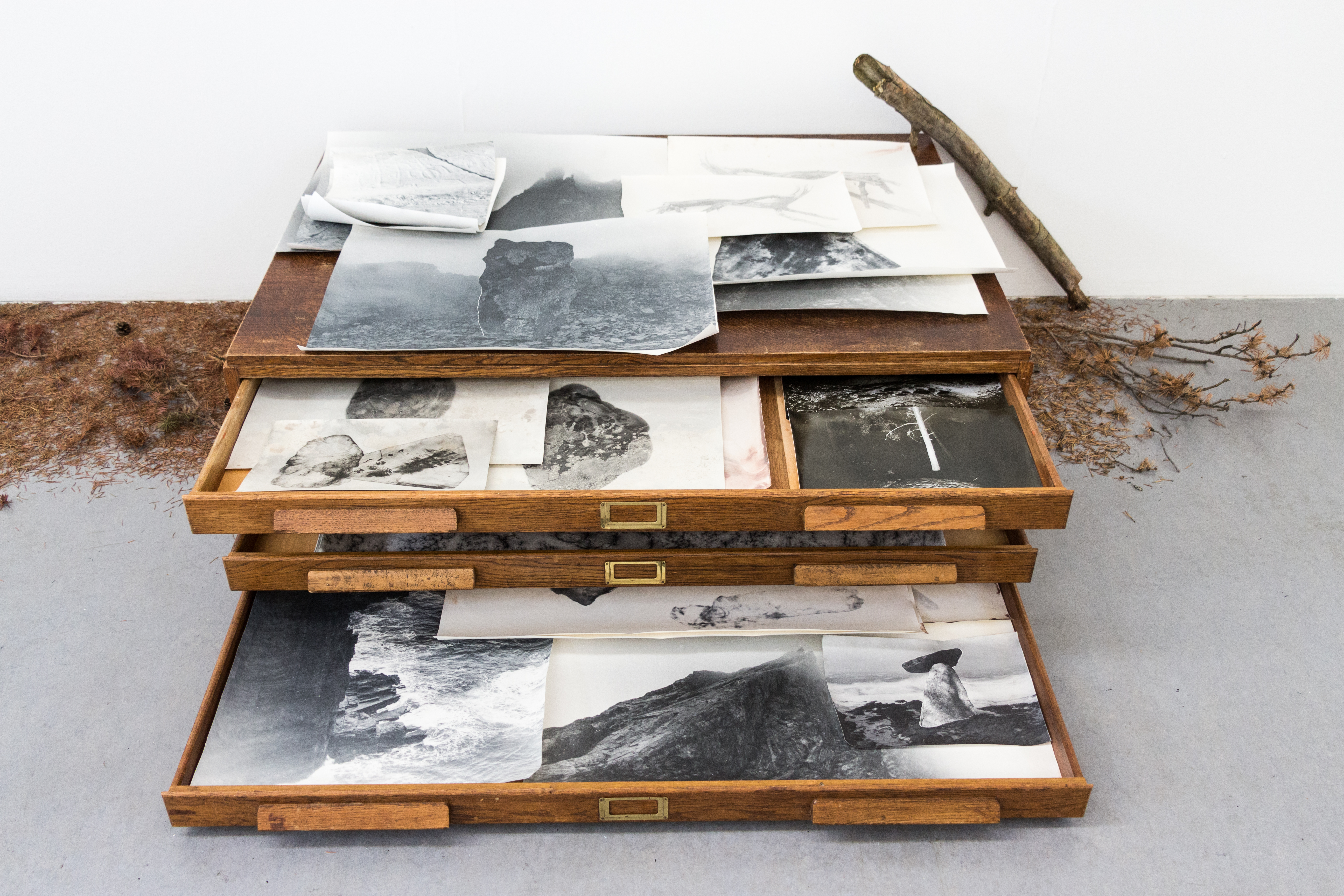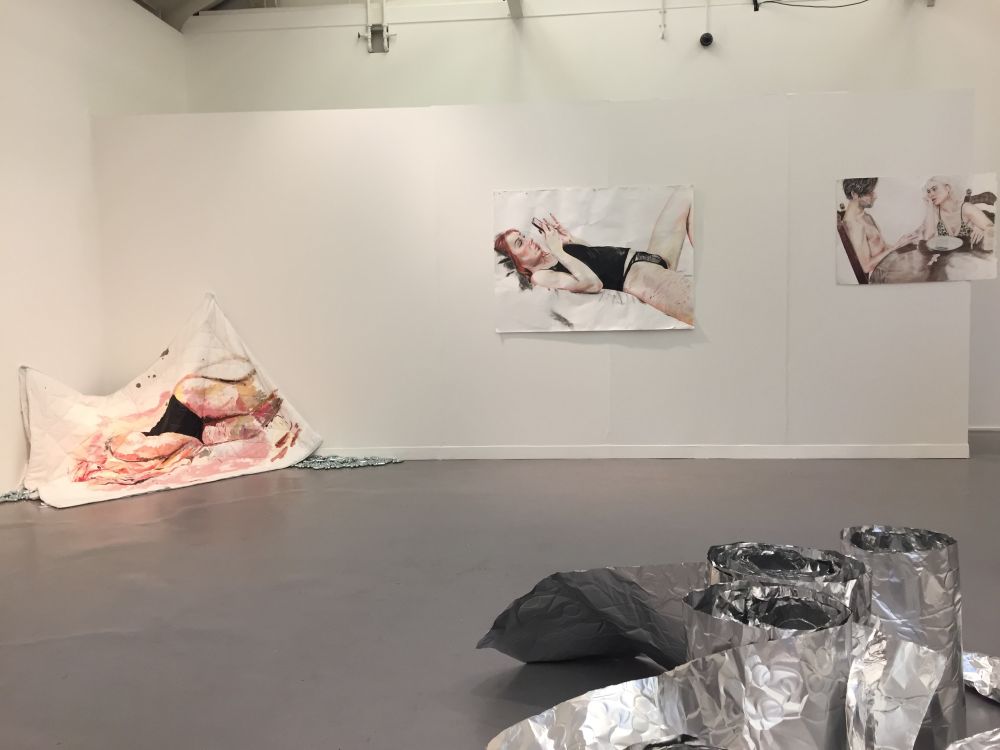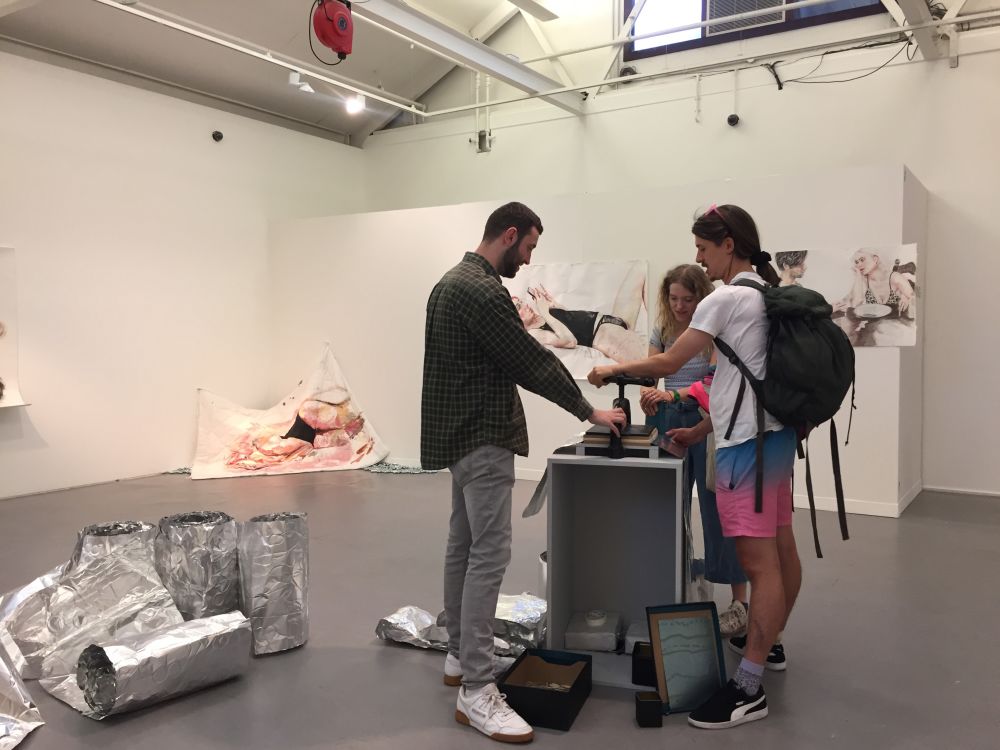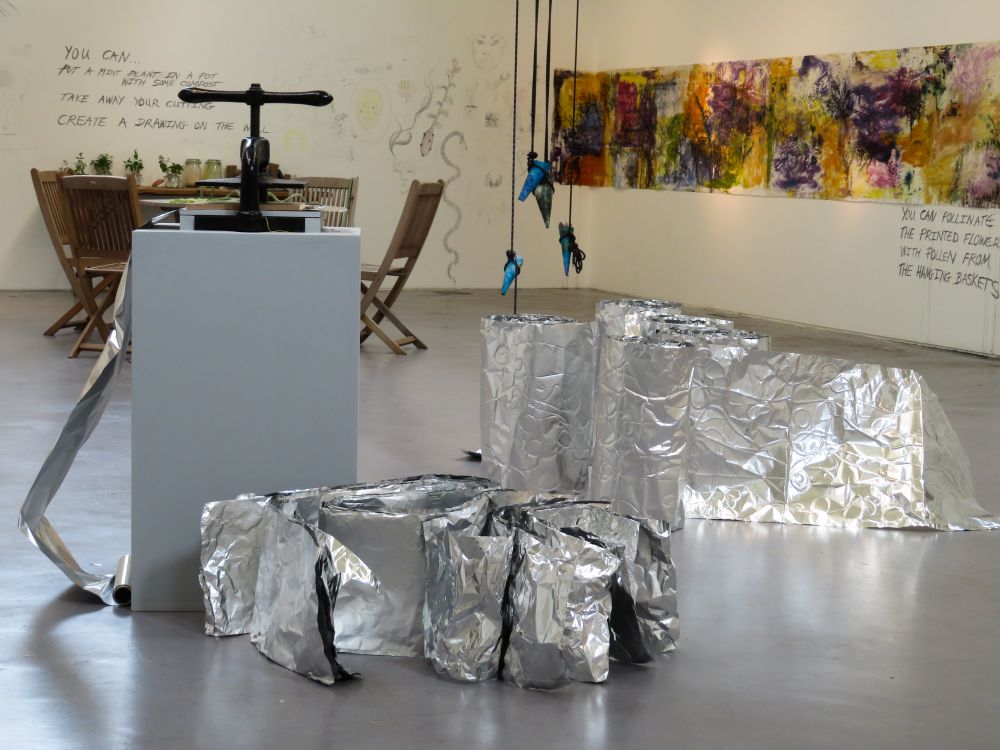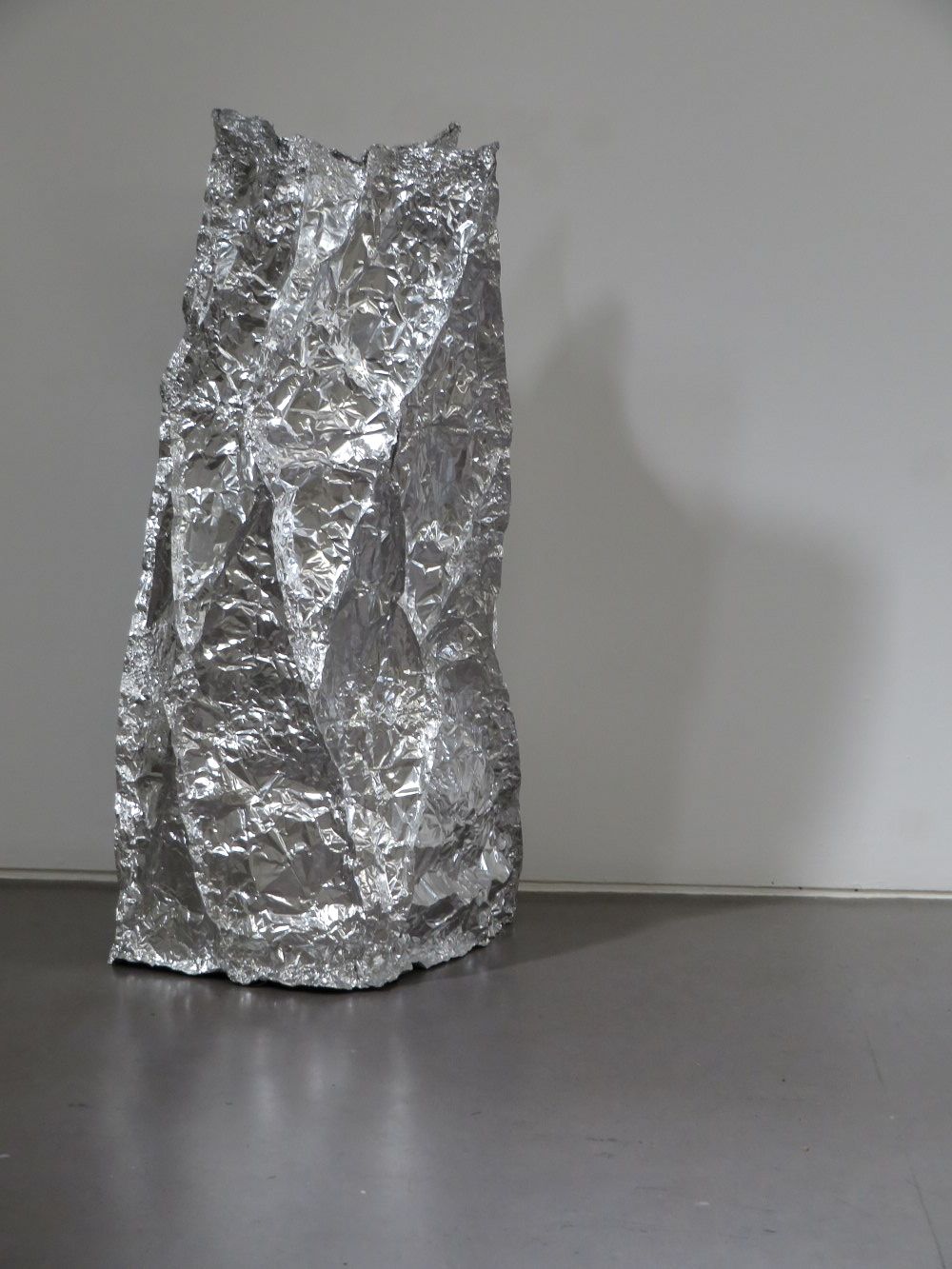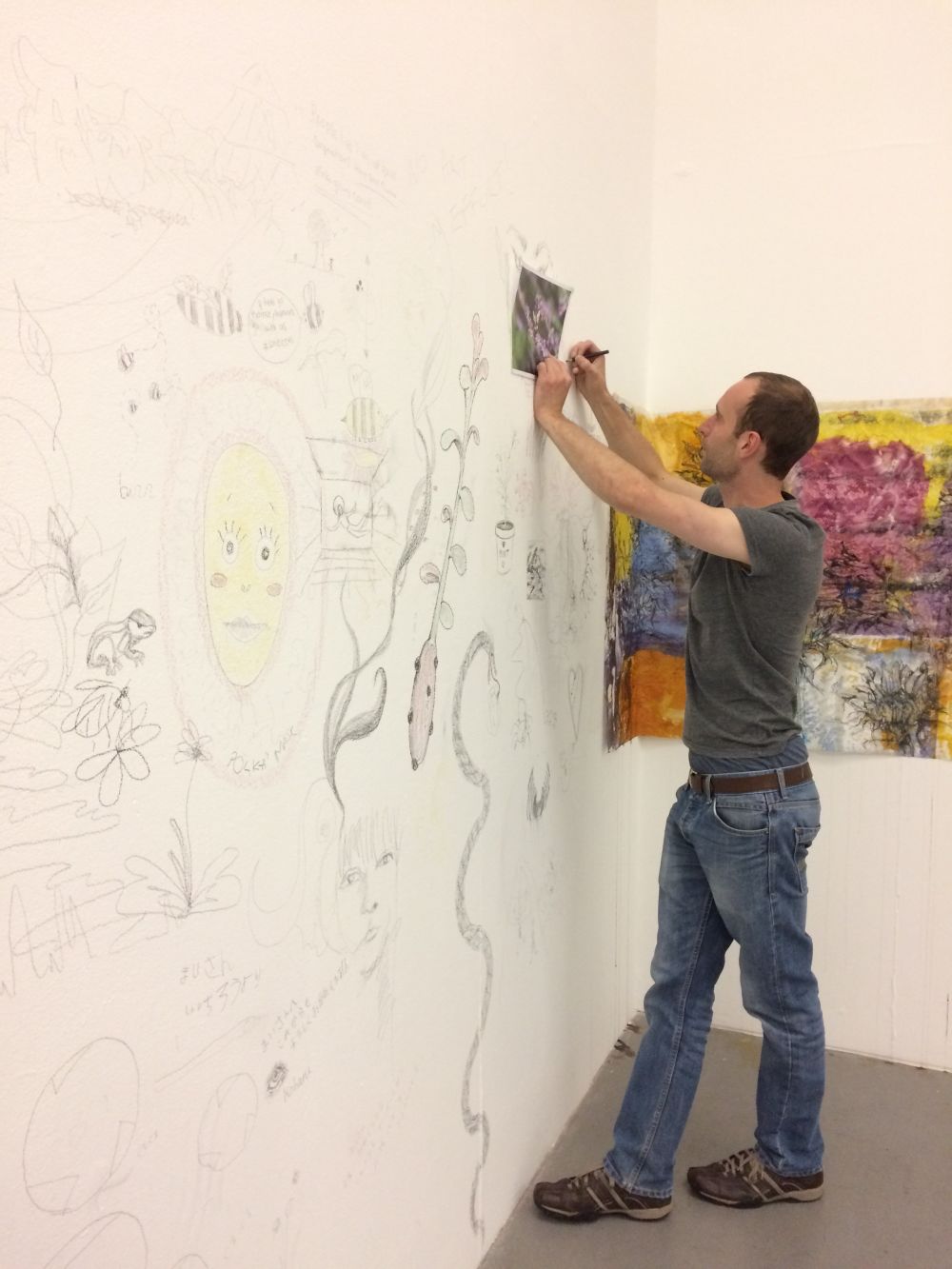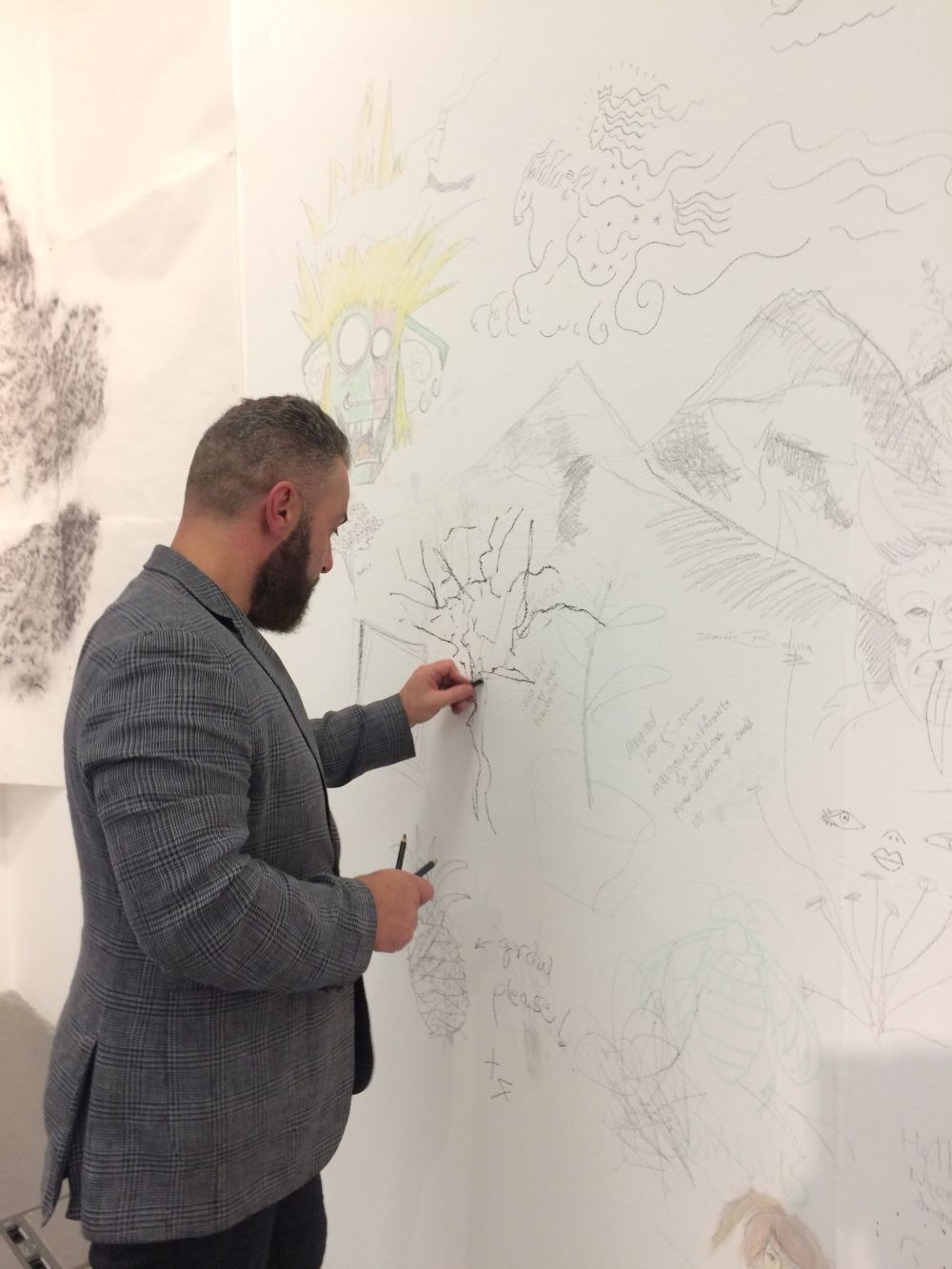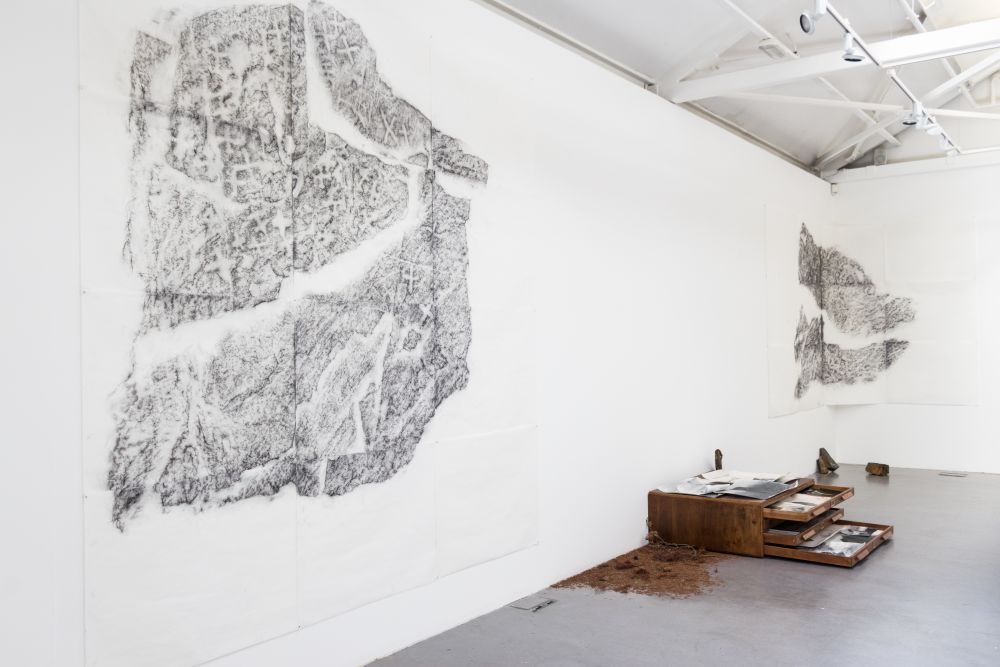Written by Emma Hollaway, MA Drawing Wimbledon Alumni 2018
On the final day of the MA Drawing degree show Whetherscapes, Professor Rebecca Fortnum led a tour and Artists in Conversation discussion. Building on two previous group shows at Lewisham Arthouse and the Centre for Recent Drawing, the four exhibiting artists - Silvia De Giorgi, Lucy George, Hannah Gormley and Denise Poote - discussed what has arisen from their sustained and dedicated practice-based research.
Hannah Gormley's drawings invited a discussion of the hierarchy of drawing and painting. Her subjects are intimate and confessional: self-harm, sexuality and drug-taking. As paintings they could be slick and brash, but as coloured pencil drawings, the intensity of the images was heightened but also undermined. Coloured pencils - or colouring-in pencils - are most reminiscent of school, and the beginning of drawing, not the adult themes and technical mastery of Gormley's drawings. The throwaway moments captured in the subject matter are emphasised by the torn and battered paper surfaces of the drawings, which often travel with Gormley as she works on them. Gormley's own mattress cover, primed and painted, and thrown carelessly into a corner of the gallery surrounded by laughing gas canisters, completes the visceral drawn self-portrait nailed to the gallery wall.
Hannah Gormley
Denise Poote's blindings, embodied drawings hand-embossed onto aluminium foil, brought the discussion to the use of embodiment in drawing. A nipping press invites visitors to make use of the opportunity created by the exhibition space to work intuitively with the foil provided, creating drawings from arrangements of objects and the pressure of the press. The foil, heavier than domestic foil but lighter than industrial foil, is difficult to manipulate but creates smooth, clear impressions, enhanced by the gloss of a reflective surface. The intuitive marks would vanish back into the foil if it is moulded or smoothed, giving a transience to the impressions, each one becoming a memory of an intuitive action.
Professor Fortnum questioned whether arranging objects onto a printing 'plate' and embossing them onto foil created an intuitive and embodied mark or a more distanced and deferred mark. The relationship of the blindings to different drawing processes was also discussed: while a frieze-like display of one blinding becomes a diagram or a storyboard of the process, the embossed element like lines on a map, the scrolls of blindings on the floor of the gallery are narrative residues of the dynamic practice of intuitive mark-making.
Denise Poote
Lucy George's installation invites the visitor to freely participate in collaborative drawing within the gallery space. A vividly organic, mono-print, originally seven metres in length and heightened with watercolour, drips honey down the wall of the gallery.
Visitors are encouraged to take pollen from hanging baskets made from the original print and pollenate the print, enacting the activity of pollinators, reflecting George's commitment to exposing the decline in insect populations. Climbing ropes that have stood for insect flight paths in George’s previous work are now to be unravelled, encouraging participants to unravel the environment around us, and become aware of the materials we use.
The metaphors that arise from the interaction with the gallery space were discussed. In a further collaborative activity, visitors are asked to gift the exhibition with a drawing in exchange for a cutting of a mint plant. Messages, anonymous abstractions, signatures have grown across the wall of the gallery during the life of the exhibition and the prevalence of portraits was commented on.
Lucy George
Silvia De Giorgi's frottages and photographs reveal the narratives and connections of humans with their landscapes. It was noted that the techniques are process of revelation, of images that develop from the material used. The frottages reveal fissures, steps and glacial and therefore the movement and history of the rock itself. The photographs record the carvings, the landscapes that the carvings belong to, and the artist's own interaction with both, as well as referencing the chemical and elemental processes that affect geological formations. A multitude of mid-tones, textures and careful, superimposition create visions of an otherworldly landscape, devoid of human life but loaded with memory and narrative.
The photographs are displayed in an open plan chest, reminiscent of an abandoned studio in Fortnum's words, but perhaps closer to a studio still in use and a practice that is still ongoing. De Giorgi's archive of photographs will fade over time, contrasting with the permanence of the rock faces and landscapes that they attempt to record.
Silvia De Giorgi
Professor Fortnum referenced the ‘low-fi’ in the exhibited works: analogue photography, hand-embossing, colouring and unravelling. Although a sensitivity towards the hand-made is not unsurprising in a MA Drawing show, the emphasis on collective knowledge, participation and shared environments is.
Whetherscapes is the final MA Drawing show at Wimbledon College of Arts before it migrates to Camberwell. Fine Art courses will no longer operate at WCA, which make Whetherscapes a poignant testament to what can arise from committed fine art practice-based research.
DRAW
DRAW is a postgraduate interest group focusing on interdisciplinary approaches to drawing.
Post-Grad Interest Groups at UAL
A growing number of issue specific, cross-disciplinary interest groups led by postgraduate students and academics are supported by us.
These groups connect creatives with shared research interests across different subject areas.
Visit the Post-Grad Interest Group Directory
